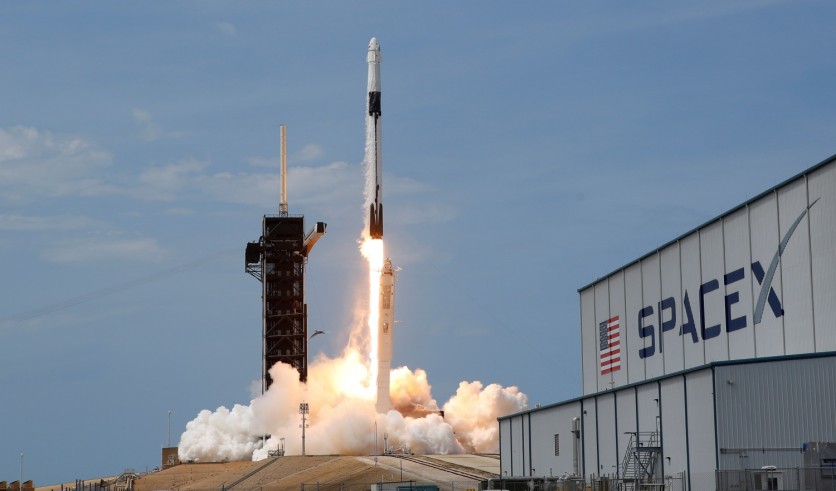International Space Station commander Chris Cassidy and Robert Behnken expect to float outside Friday, June 26, to complete the replacement of aging batteries in the lab's solar power system for the first of up to four spacewalks.

NASA administrators are hoping to get Behnken and crewmate Douglas Hurley back on board their Crew Dragon spacecraft back to Earth around Aug. 2, officials said.
ALSO READ : NASA's Space Station Program Manager Retires As International Space Station is About to Upgrade
Mission Crew One
The NASA managers had not mentioned a return date when the SpaceX spacecraft lifted off atop a SpaceX Falcon 9 rocket last May. But flight controllers are still "looking to landing in the timeframe of early August," Steve Stich, NASA's Commercial Crew Program manager, told reporters during a teleconference.
Stich explained the astronauts would be working on those opportunities with the space station program when they land on Aug. 2.
Splashdown for the SpaceX capsule in early August would give engineers time to thoroughly evaluate Demo 2's first piloted test before clearing the decks in mid-September for an operational, full-duration mission with four astronauts. The flight is known as mission Crew One.
"[Currently], we think we need about six weeks to review all the data from the landing and the undocking, and then go through the review process to get to the Crew One launch," Stich said. "So there's kind of a six-week iron bar, if you will, between the Demo Two landing and the Crew One launch, and that's going to be a factor as we look at launch dates later on for Crew One."
Better safe than sorry, NASA says
The Crew Dragon has spent much of its time powered down in a kind of electronic hibernation after docking at the space station the day after launch. But every Wednesday, flight controllers wake up to collect engineering data and determine its performance. The capsule is performing in near flawless fashion so far, 25 days into its mission.
One question mark going into the flight was how atomic oxygen in the space environment might affect the spacecraft's solar battery. Engineers expected their performance to degrade over time. Still, as it turns out, the system performed beyond predictions for pre-flight.
Stich said the vehicle is doing exceptionally well. He added they are still learning a lot about the vehicle. There is nothing that's of any concern, Stich said, saying they are learning how to manage the systems, heaters, and thermal performance as they go through the orbit changes.
"We've been watching the power generation (and) Dragon's generating more power than we expected," he added.
Hurley and Behnken would conclude their mission with NASA's first splashdown of the oceans since the 1975 Apollo-Soyuz flight. Upon leaving the space station, the Crew Dragon holds enough on-board supplies for about three days of travel. Stich said the journey home could be as short as six hours or could extend to a full day or even longer. The duration depends on when the ship eventually departs and which landing site is chosen.
The four massive solar wings of the space station feed electricity into eight electric channels to provide electricity when it is not in direct sunlight. The panels initially rely on 48 nickel-hydrogen batteries, six per power channel.
Spacewalking astronauts have replaced 36 of the 48 older batteries in a multi-year project, adding 18 smaller and more powerful lithium-ion power packs and circuit-completing adapter panels instead.




![Most Useful Google Chrome Keyboard Shortcuts You Need to Know to Improve Your Browsing Experience [2024]](https://d.techtimes.com/en/full/449047/most-useful-google-chrome-keyboard-shortcuts-you-need-know-improve-your-browsing-experience-2024.jpg?w=184&h=103&f=476d29fd60df70a67f6679f99a2ca6d0)